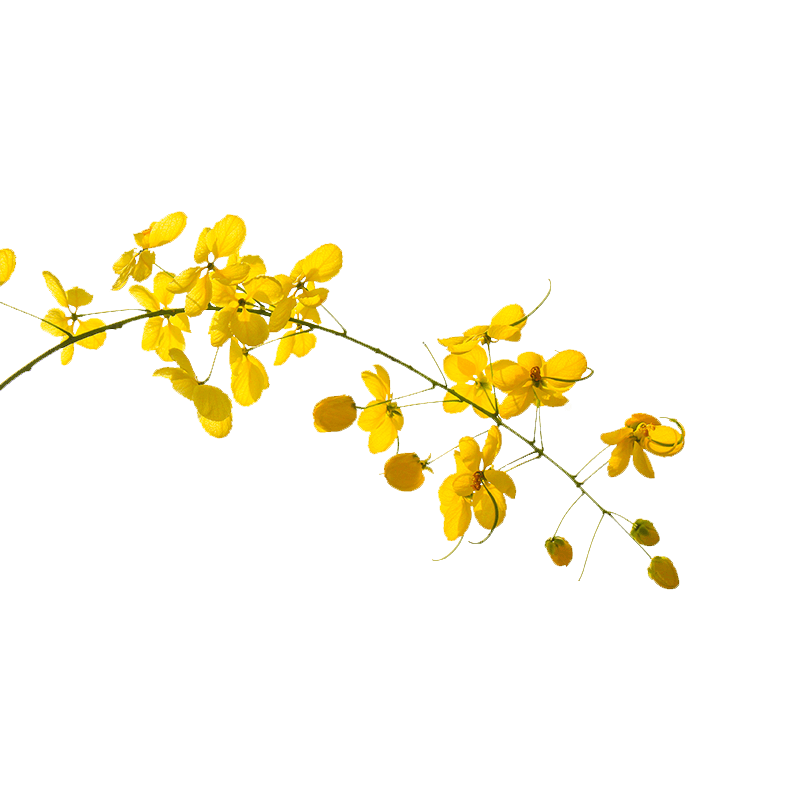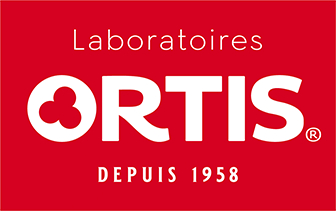
Golden Shower Tree
Latin name
Origin
Used part
Active components
Usage
The plant is appreciated for its decorative value. It is often planted in gardens and along the roadside. In India, the bark of the tree is often used as a tanning agent. The reddish wood is hard, heavy, strong and durable, and its suitable for all types of carpentry. The leaves and the fruit are traditionally used for their gentle stimulating effect on the intestines. In Ayurvedic medicine, the tree is called “aragvadha” which means: “disease killer” and indicates the fact that this plant treats a variety of diseases. Golden Shower Tree can be used to stimulate gastrointestinal health and to facilitate the intestinal transit naturally. 1-6
Bibliographical references
- Indian medicinal plants. 4 vols. 2nd ed.
Kirtikar, K.R. and Basu, B.D.
Jayyed Press, New Delhi. 1975.
- Medicinal Plant in India.
Satyavati GV, Sharma M.
New Delhi: ICMR; 1989.
- Phytochemical constituents of Cassia fistula
Theeshan Bahorun, Vidushi S Neergheen, Okezie I Aruoma
African Journal of Biotechnology Vol. 4 (13), pp. 1530-1540, December 2005
African Journal of Biotechnology: https://www.google.com/url?sa=t&rct=j&q=&esrc=s&source=web&cd=14&ved=0CJEBEBYwDQ&url=http%3A%2F%2Fwww.ajol.info%2Findex.php%2Fajfand%2Farticle%2Fdownload%2F71772%2F60729&ei=-pUPUbfqGLCk0AW-8YCADw&usg=AFQjCNFAiC3zaepVF5J0SSkBmAs_A0XV-g&sig2=vN93eyO9wdieEDq9k1Fi6g
- Bioefficacies of Cassia fistula: An Indian labrum
M. Moshahid A. Rizvi, Irshad M., Gamal El Hassadi and Salaem Ben Younis.
African Journal of Pharmacy and Pharmacology Vol. 3(6). pp. 287-292, June, 2009
Academic Journals: http://www.academicjournals.org/ajpp/pdf/%20pdf2009/June/Moshahid%20et%20al..pdf
- Comparative Analysis of the Antioxidant Activity of Cassia fistula Extracts
Md. Irshad, Md. Zafaryab, Man Singh, M. Moshahid, A. Rizvi
International Journal of Medicinal Chemistry Volume 2012, Article ID 157125, 6 pages Hindawi: http://downloads.hindawi.com/journals/ijmc/2012/157125.pdf
- Cassia fistula Linn - Pharmacognostical, Phytochemical and Pharmacological Review
Thirumal.M, Surya.srimanthula, Kishore.G
Critical Review in Pharmaceutical Sciences 2012, 1(1)
Earth Journals: http://earthjournals.org/crps-7.pdf
The health claims that feature on our website in relation to the plants contained in our products are compliant with the list of health claims awaiting final assessment by the Community authorities (cf. website of the European Commission: http://ec.europa.eu/nuhclaims/). However, they may be subject to modification following their assessment by the national competent authorities.
The health claims relating to other nutrients or substances contained in our products that feature on our site are compliant with Regulation No. 432/2012 of the Commission of 16 May 2012 which establishes a list of authorised health claims authorised in relation to food products, other than those in reference to the reduction of the risk of disease as well as community-based development and child health (cf. website of the European Commission: http://ec.europa.eu/nuhclaims/).

 Belgique
Belgique  België
België  France
France  Italia
Italia  Portugal
Portugal  España
España  United Kingdom
United Kingdom  Κύπρος
Κύπρος 